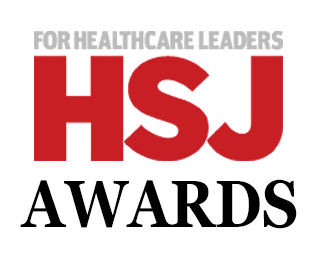Automated clinical conversations via text messaging
Engage patients. Improve outcomes. Lower costs.
Free up clinical time.
Reduce utilisation.
50% Fewer appointments & calls
60% Lower hospital admissions
80% Correct medication use
Digital equity. Reach every patient.
Simple for everyone
No app & nothing to install
Improved clinical outcomes.
Better patient experience.
200,000 Successes in US, UK & Australia
100+ Clinical studies
20 Peer-reviewed articles
Florence is proven to free up clinical time and reduce hospital admissions while delivering better outcomes and patient experience. By continuous, automated clinical conversations via accessible text messages, Florence drives engagement and self-management. We help clinicians help patients help themselves.
Proven BP Management Success
Florence provides low-cost, scalable hypertension management programmes. By a combination of collecting patient readings, immediate feedback and bite-sized education, Florence drives improved self-management and medication adherence.
From diagnosis to titration and long-term monitoring, Florence supports a range of hypertensive programmes freeing up clinical time while delivering better outcomes.
Over 30,000 patients have improved BP control with the support of Florence.
Simple, Effective Diabetes Management
Florence provides low-cost, scalable diabetes programmes accessible to all patient groups. By combining the collection of BG readings, immediate feedback and bite-sized education, Florence drives sustained improved self-management and medication adherence.
With solutions for both Type I and Type II diabetes, Florence supports all patients while freeing up clinical time and delivering better outcomes.
Better Care for Mother & Baby
Florence has a proud record of educating, supporting and motivating new and expectant moms by enabling them to self-monitor their blood pressure and glucose levels and encouraging them to take up and continue breastfeeding.
This results in healthier moms, longer-term pregnancies, freed-up clinical time and significant cost savings.
Better TCM, Simple to Implement
By continuous engagement, collection of data and education, Florence helps clinicians manage more patients at home post hospitalisation, more cost-effectively, while reducing the risk of readmission.
Transition from hospital to home is supported for patients, with bi-directional conversations answering their needs, and reminding them about medication and follow-up appointments. Vital signs readings enable clinicians to closely monitor patients for any signs of deterioration ensuring timely and accurate interventions.
Better COPD Care with Significant Savings
By continuous engagement of COPD patients, including collection of SATS readings, provision of advice and a strong focus on coaching and self-management, Florence is proven to dramatically reduce hospital admissions and improve patients’ quality of life.
From titration, medication adherence and long-term monitoring, Florence supports a range of COPD programmes, reassuring patients when to take rescue medication, encouraging lifestyle modifications, and freeing up clinical time while delivering significantly better outcomes.
200,000+ patient successes across key conditions
Florence has demonstrated efficacy in the US, UK and Australia across a range of chronic conditions and maternity.
Arrange a Demonstration
We'll be in touch to demonstrate the value that Florence can bring you, your team, and your patients
Automated clinical conversations
Over 10 years and through 20+ million patient interactions the team has refined Flo’s intelligent, human-like persona to create positive health-improving relationships with individual patients.
Florence is accessible and incredibly simple for patients to use – all you need is a mobile phone (no app to download!).
Florence is managed by admin and clinicians via a powerful, intelligent and secure software platform, clinically validated protocols, and extensive analytics.
Everything we do is focused on engaging patients and supporting behavioural change and self-care. This drives better clinical outcomes, better patient experience, and reduces clinical time.
Easy to roll-out
100+ successful implementations
Extensive clinical evidence
Over 110+ independent studies
Over 125+ clinical protocols
Simply tailored to local pathways
Remote patient monitoring
Deliver effective, low-cost remote monitoring with automated clinical conversations.
The Florence platform includes:
- Real-time monitoring
- Trends & escalations
- Team can text patient directly
- Outcome analytics
- EHR integration
Independently clinically proven and trusted
Florence is the only evidenced-based technology enabled care service that supports routine healthcare delivery. You can rely on Florence to deliver safe and effective outcomes as evidenced in 20 peer-reviewed journal articles and over 100 independent clinical studies.
By working with academic institutions and clinical researchers, we have robust clinical evidence not only from the UK but also from successful trails and implementations in the United States (for the Veterans Administration) and in Australia.
From the very beginning of Florence, patient safety and clinical efficacy has been our top priority.

WINNER
Driving Efficiency Through Technology
News & Insights from Florence
Hypertension: 8 weeks to control
A Health IT Director’s Journey with Florence “I think all clinicians should consider using Florence for their HTN and pre-HTN patients.” From Assumptions to Action
Maternity Success with “Go Flo Fridays” at Great Western Hospital
Great Western Hospital’s Maternity Department has recently celebrated their first anniversary with Florence helping expectant mothers to monitor their blood pressure during pregnancy. Both parents
Practising at the Top of Your Licence…In an AI-Powered World?
Florence, the AI nurse, is already proving what’s possible through frequent – often daily – interactions with patients via simple text: As COVID-19 accelerated telehealth,
Engaging the Disengaged: Florence Transforms Blood Pressure Monitoring in Bedfordshire.
Case Study: Emma Debbage, Practice Manager at West Street Surgery The introduction of Florence at West Street Surgery has transformed Practice Manager, Emma Debbage and
Simply Plug AI Nurse Florence into Epic and Other EHRs
Think of Florence, the AI Nurse, as a trusted member of your clinical team—fully integrated into your workflow and your EHR. With just a click,
Average of Three Appointments Saved per Hypertensive Patient in Staffordshire
“Not only the number of contacts, but the time taken to diagnose hypertension and effectively manage hypertension in a timely manner has helped patients and

